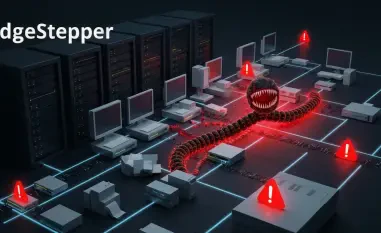State-sponsored cyber threats have rapidly emerged as some of the most pressing challenges in cybersecurity, with substantial implications for global economic stability and national security. As nations increasingly rely on digital infrastructure, the vulnerability to state-sponsored cyber attacks grows, affecting various vital sectors. In a world where information is currency, these threats not only aim to disrupt services but also to manipulate information and exploit technological advancements for geopolitical advantages. With their highly targeted and sophisticated nature, these threats pose a unique challenge to both governments and companies striving to safeguard sensitive assets.
Evolving Methodologies of State-Backed Cyber Intrusions
One of the most persistent methods used in state-sponsored cyber attacks is the deployment of Advanced Persistent Threats (APTs). These threats are defined by their stealth and sophistication, allowing attackers to remain undetected within systems for extended periods as they gather information or manipulate data. APTs leverage continuously evolving techniques and malware, tailored to bypass advanced security defenses. This adaptability makes APTs particularly dangerous, highlighting the necessity for organizations to stay ahead with innovative defense strategies, robust monitoring, and rapid response mechanisms.
Another significant component of state-sponsored cyber strategies involves information warfare and espionage. This approach focuses on manipulating and stealing sensitive information to gain competitive advantages or disrupt the adversary’s operations. By targeting critical sectors such as defense, finance, and energy, attackers can wield substantial influence over geopolitical landscapes. These tactics underscore an intricate web of intelligence operations where the line between cyber warfare and traditional espionage blurs, often altering the balance of power in pivotal geopolitical arenas.
Current Landscape and Emerging Patterns
State-sponsored cyber activities continue to evolve, with recent developments showing an increased integration of artificial intelligence and machine learning to enhance the precision and impact of attacks. Techniques such as deepfakes and AI-driven social engineering are becoming prevalent, increasing the scope and scale of these threats. Additionally, geopolitical shifts are influencing cyber strategies, with state actors adopting more aggressive postures in cyberspace. This evolution signifies a transition toward more calculated cyber tactics and internationally orchestrated campaigns, demanding adaptive and anticipatory responses from global cybersecurity frameworks.
Illustrative Incidents and Sectoral Impacts
State-sponsored cyber threats have had profound real-world impacts, with notable incidents underscoring their far-reaching consequences. For instance, cyber operations targeting sectors like finance and defense have demonstrated the attackers’ ability to extract sensitive information and cause substantial financial damage. High-profile breaches have involved sophisticated infiltration techniques and complex coordination among international actors. These events highlight the intricate nature of state-backed cyber efforts, emphasizing the urgent need for enhanced threat intelligence and robust defense mechanisms across all levels of digital infrastructure.
Addressing Challenges in Countermeasures
Mitigating state-sponsored cyber threats poses significant challenges, particularly due to the complexity involved in accurately attributing cyber attacks to specific state actors. Identification is further complicated by the use of sophisticated tactics, often requiring multinational cooperation and understanding of regulatory landscapes. Governments and organizations worldwide are collaborating to implement comprehensive cybersecurity measures, promote information sharing, and develop advanced detection technologies. These efforts are crucial in establishing effective barriers against increasingly complex cyber threats perpetrated by states.
Anticipating Future Developments
Looking ahead, state-sponsored cyber threats are likely to persist as pivotal issues within global security landscapes. Potential breakthroughs in quantum computing and cybersecurity policies may shape the trajectory of these threats, offering new avenues for both attack and defense. The future could also see increased international cooperation aimed at establishing norms and frameworks to combat state-backed cyber activities. Emphasizing proactive measures and strengthening alliances will be pivotal in countering these evolving threats, ensuring the protection and resilience of global digital ecosystems.
Key Takeaways and Reflections
Through this analysis of state-sponsored cyber threats, it is apparent that their sophistication and reach have profoundly affected international security dynamics. As these threats continue to adapt and grow, the imperative for robust, coordinated defense mechanisms becomes more pressing than ever. Lessons from past incidents stress the importance of vigilance, innovation, and strategic alliances in crafting comprehensive responses. The path forward lies in cultivating a resilient cybersecurity environment that anticipates future challenges while harnessing the full potential of collaborative international efforts.













